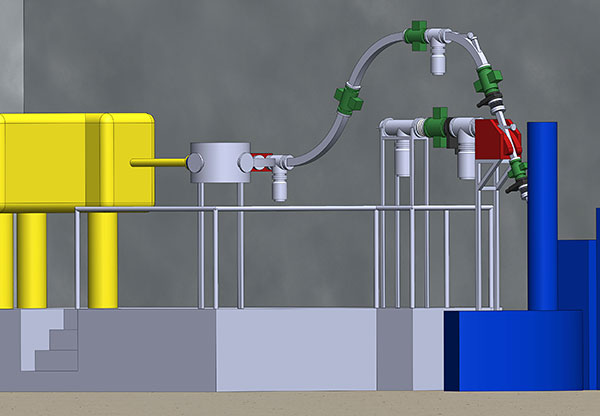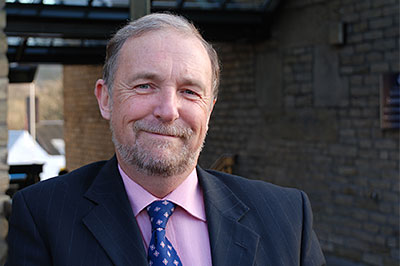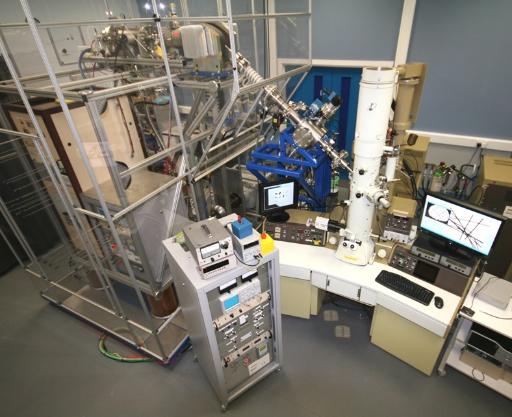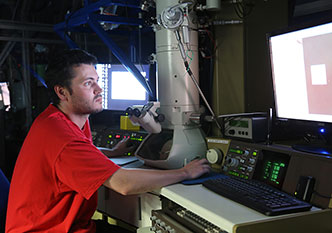£3.5 million grant will create major nuclear research facility
 The design of an advanced new facility called the MIAMI II.
The design of an advanced new facility called the MIAMI II.
Wed, 15 Apr 2015 11:06:00 BST
EPSRC grant of £3.5 million will create world-leading research for the analysis of nuclear materials and the development of space technology
 A MULTI-million pound award will enable the construction of an advanced new facility (design of which is pictured above) that confirms the University of Huddersfield as one of the world’s leading centres for the analysis of nuclear materials, ensuring the safety of the new generation of reactors. It also means that scientists at the University will able to play a part in the development of space technology.
A MULTI-million pound award will enable the construction of an advanced new facility (design of which is pictured above) that confirms the University of Huddersfield as one of the world’s leading centres for the analysis of nuclear materials, ensuring the safety of the new generation of reactors. It also means that scientists at the University will able to play a part in the development of space technology.
The Engineering and Physical Sciences Research Council (EPSRC) has announced a grant of £3.5 million to the research group headed by the University of Huddersfield’s Professor Stephen Donnelly (pictured left), who developed the existing facility named MIAMI – standing for Microscope and Ion Accelerator for Materials Investigations.
Unique in the UK, and one of only two such facilities in Europe, it is a combined electron microscope and ion beam accelerator. It uses ion bombardment as a safe, non-radioactive means of simulating the effects of radiation damage on materials.
Pictured below is an aerial view of the original and existing MIAMI currently in use at the University.
 MIAMI II
MIAMI II
MIAMI is well established especially as a tool for researching the materials that are best for withstanding irradiation in nuclear reactors. But now Professor Donnelly and his team have won the funding to construct MIAMI II, which will have even greater research potential.
It will be an advanced electron microscope that has dual ion beams, meaning that it can simultaneously simulate two key aspects of neutron bombardment – the impact on the atomic structure of materials, and the internal damage caused by the build-up of gases – principally helium and hydrogen. This can severely weaken materials by creating a “honeycomb” effect.
“With our existing MIAMI, we can investigate these two issues sequentially,” explained Professor Donnelly. “But that isn’t same as what the neutrons are doing simultaneously. So MIAMI II, with a second beam line, will mean that we are more completely simulating the real effect of nuclear reactors.”
The new machine will also be much more versatile than its predecessor and have enhanced analytical capability, continued Professor Donnelly, who anticipates that MIAMI II will lead to research collaborations with scientists from around the world.
Space age
Dr Jonathan Hinks using the existing MIAMI for his research

Nuclear science is likely to continue as the main area of investigation, but other fields will develop, including nanotechnology and space research.
“Any vehicle, or anything sent anywhere into space – whether into earth orbit or interstellar space – is being bombarded by energetic particles. So there are potential applications for MIAMI II in that area,” said Professor Donnelly.
The existing MIAMI will continue to be used for research and also for training purposes, but MIAMI II will be constructed within 12 months and fully-operational soon after that. The award of £3.5 million is to pay for the manufacture of the equipment and the grant application was ranked second out of more than 180 that were considered by an EPSRC panel.
Professor Donnelly and his team have consolidated their leading position in nuclear material and nanomaterial research by winning a succession of EPSRC awards, including recent grants of £1 million and £400,000 that will lead to the appointment of several postdoctoral researchers.







